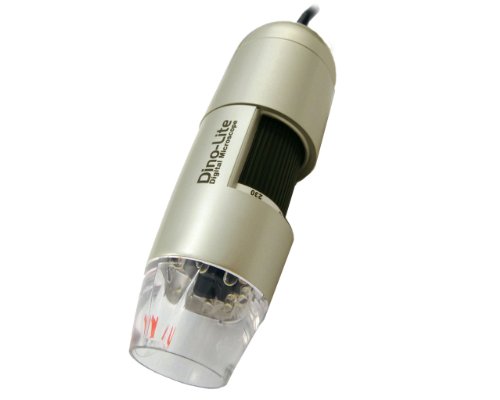Endoplasmic reticulum
Endoplasmic reticulum structure
Light Source Microscope
Endoplasmic reticulum (Er) is a type of organelle inside a cell. Er is a network of fluid-filled tubes. There are two types of Er, rough and smooth. A cell may have both or only one, depending on its function.
• Rough Er is joined to the nuclear membrane. Its external outside is studded with ribosomes (organelles complicated with protein formation).
• plane Er is continuous with rough Er but has no ribosomes.
Endoplasmic reticulum functions Rough Er
• industry the building blocks of cell membranes (phospholipids and cholesterol).
• Helps make and transport proteins.
• The external face provides a site for chemical reactions.
Protein synthesis and transport
1 Ribosomes on the rough Er wall manufacture protein strands.
2 Within the lumen, the protein strands fold into distinctive shapes unique to their chemical structure, identifying them as exact proteins.
3 Sugars may be added to proteins to form glycoproteins.
4 Completed proteins are encased in membranous vesicles (tiny membrane sacs), which pinch off the Er and voyage to other sites in the cell.
Smooth Er Enzymes (biological catalysts) embedded in its membrane walls are complicated with chemical reactions concerning:
• the making of cholesterol;
• the making of sex hormones (steroids, hormones made from cholesterol);
• processing fats;
• the detoxification of poisons; and
• muscle cell contraction.
Ribosomes Location and structure
Ribosomes are organelles found inside a human cell. They are also found in all other plant and animal cells. Ribosomes are used to decode Dna (deoxyribonucleic acid) into proteins.
They are tiny, round granules.
Ribosomes are settled on the rough endoplasmic reticulum (giving it the "rough" appearance). They are also found individually throughout the cytoplasm.
Close to the nucleus
Ribosomes are most distinct on the rough Er, where most of the cell's proteins are manufactured. Ribosomes read mRna (messenger ribonucleic acid) molecules, a type of nucleic acid copied from the cell's Dna, that are carried from the nucleus straight through the Er lumen.
Decoders
Ribosomes have two parts, a large and a small subunit. They are made of rRna (ribosomal ribonucleic acid) and proteins. Each ribosome is just over 20 nm in diameter and 30 nm in height.
mRna molecules are passed between the two units. At this point the threeletter code of the mRna is translated.
Functions of ribosomes
When held between the ribosomal subunits, the single strand of mRna comes into taste with another type of nucleic acid called tRna (transfer Rna).
tRna molecules are coded to attach to exact amino acids, the building blocks of proteins.
The mRna codes for single amino acids using three-letter "words," or codons. The letters in each word correspond to bases, special units lined up along the Rna molecule. The bases are guanine (G), cytosine (C), adenine (A), and uracil (U). The four bases form pairs of opposites: G with C and A with U. Therefore, each codon of mRna bonds to a corresponding tRna molecule made up of the opposite bases. In so doing, the tRna places the spoton amino acid into its right position for the protein being produced.
Free ribosomes (those not attached to rough Er) are complicated in making proteins, such as enzymes, to be used by the cell itself. Membrane-bound ribosomes (those attached to rough Er) are mostly complicated in making proteins that will be used in the cell membrane or exported out of the cell.
The Golgi apparatus
The Golgi apparatus, or complex, is an organelle found in most human cells.
It is regularly settled near the nucleus at the center of the cell. It is named after the 19th-century Italian anatomist Camillo Golgi, and is connected with the secretion of substances from the cell.
• The Golgi apparatus is a stack of four to six flat, membrane-enclosed, diskshaped sacs known as cisternae.
The stacked cisternae look as if a pile of dishes.
• A large estimate of membranous vesicles (tiny membrane sacs) surround each Golgi apparatus. Most vesicles are settled on the side of the Golgi apparatus nearest to the rough endoplasmic reticulum (Er).
• Each Golgi stack has two "faces," or sides. The cis face is on one side and the trans face is on the other. In general, the cis face looks toward the rough Er and the trans face toward the cell (plasma) membrane surrounding the cell. These faces are functionally and biochemically different, and include very different enzymes (biological catalysts).
• Each face is connected to its own network of branching and interconnected tubules (tiny tubes).
These are known as the cis-Golgi and trans-Golgi networks.
• Proteins and lipids voyage from the Er to the cis face in the vesicles, where they enter the cisternae. These substances are then released straight through the trans face in other vesicles.
The Nucleus
Nucleus structure
The nucleus is regularly settled at the center of a cell. Its shape often reflects the cell's shape. For example, flat cells have flat nuclei.
A nucleus consists of:
• The nuclear envelope. This is made up of two membranes. Like the cell membrane, each nuclear membrane consists of a phospholipid bilayer-two layers of phospholipid molecules.
• Nuclear poresAt distinct points, the nuclear membranes fuse to form holes in the nuclear envelope.
• Nucleoplasm This a gel-like fluid containing vital chemicals, such as nutrients and salts. The nucleolus and chromatin are suspended in the nucleoplasm.
• Chromatin An amorphous dark area Nucleus made up of strands of Dna (deoxyribonucleic acid). The Dna is wound nearby histone proteins comprised of chromatin fibers.
A clump of eight histones on a Dna strand comprises one nucleosome.
Normally, chromatin is not descriptive under a light microscope. During cell division, however, chromatin condenses to form chromosomes, which are descriptive under a light microscope.
• The nucleolus This is a contract ball of Rna (ribonucleic acid) and proteins. It does not have an outer membrane. Every nucleus has one or more nucleoli.
Nucleus shapes
The nuclei in different cells have a range of shapes.
Red blood cells, or erythrocytes, do not have nuclei at all. The different white blood cells (leukocytes) have unusual nuclei. Neutrophils have multilobed nuclei.
Eosinophils have just two lobes. The nucleus of a basophil cell, is hard to see behind the granules of histamine it contains.
Lymphocytes are small cells, and their nuclei fill approximately the entire cell.
Monocytes are very large cells. Their nuclei are often kidney-bean shaped.
buildings and Function of Cell Nucleus, Er, Ribosomes and Golgi Apparatus
Related : Pneumatics and Plumbing Good choice waterproof camera panasonic compound microscope parts

























